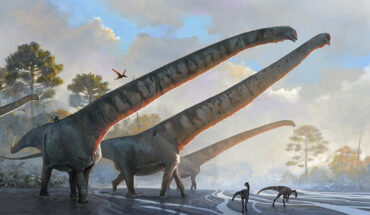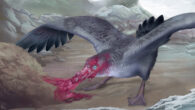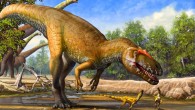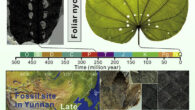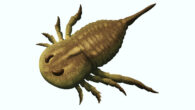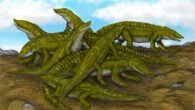Mamenchisaurus sinocanadorum lived 162 million year ago (Late Jurassic epoch) in what is now China. A rendering of Mamenchisaurus sinocanadorum. Image credit: Júlia d’Oliveira. Mamenchisaurus sinocanadorum is a very large dinosaur in the sauropod family Mamenchisauridae. It was first described in 1993 from fossils found in the upper part of the Shishugou Formation in the Junggar Basin, Xinjiang, China. At approximately 15.1 m (49.5 feet), its neck...

